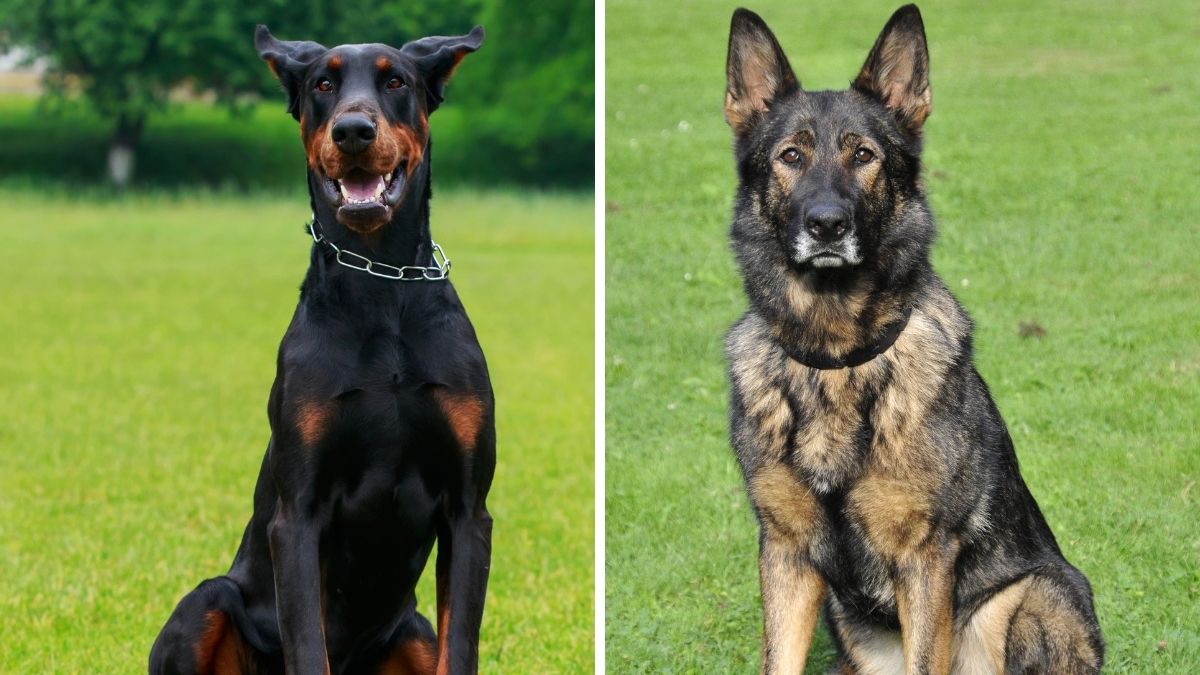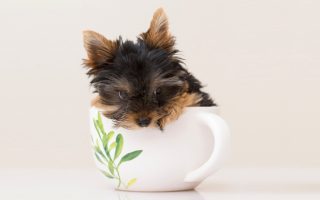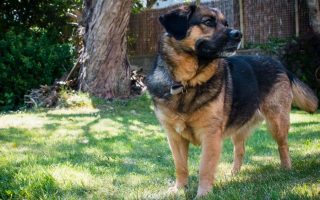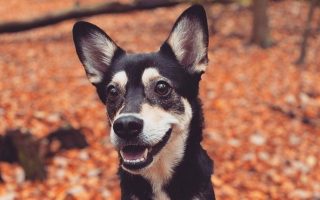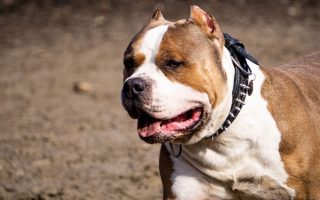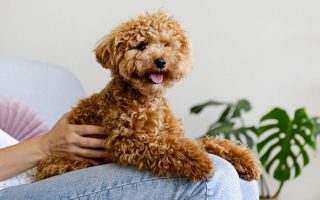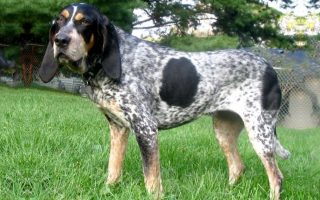It’s the battle of best guard dogs, and we would like to invite to the ring two excellent and overly protective house guardians.
Ultimately, it is the Doberman vs German Shepherd. Not sure which breed is best for you? You’ve come to the right place.
The German Shepherd and Doberman Pinscher are two different and well-known breeds, each with their specific behaviors and even physical distinctions.
But one thing is sure — they have proven that they will do whatever it takes to guard your home.
Because they come with many wonderful qualities, it can be hard to choose which you’d like to appoint guarding responsibilities.
We’re not here to state that one is better than the other but to help you decide which breed would be more fitting for you.
In this article, we will compare both breeds to draw out their similarities and differences.
Doberman vs German Shepherd Comparison
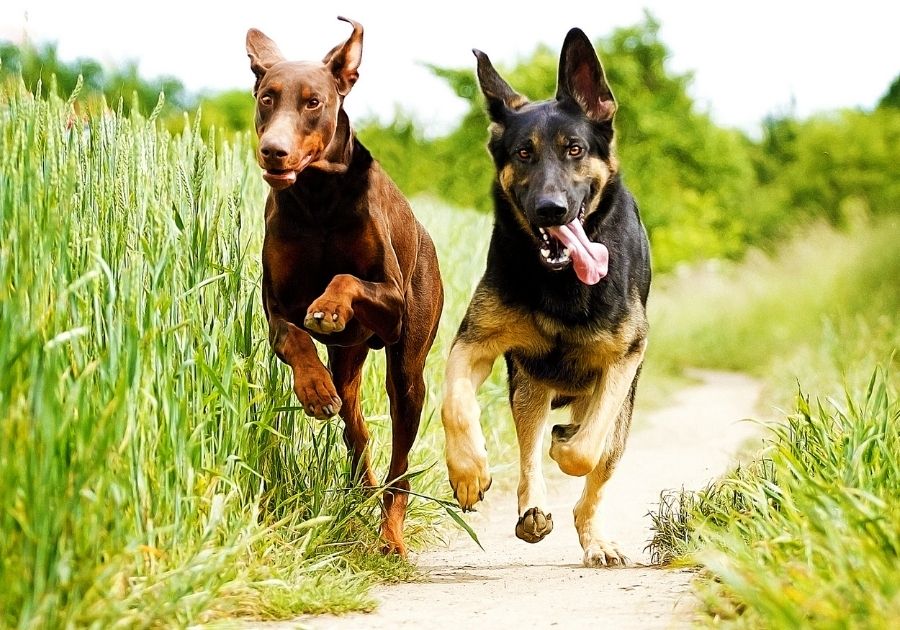
| Comparison | Doberman Pinscher | German Shepherd |
|---|---|---|
| Height | 24 to 28 inches | 22 to 26 inches |
| Weight | 60 to 100 pounds | 50 to 90 pounds |
| Coat Type | Short, sleek, shiny | Double, wiry, soft |
| Coat Colors | Black, black and tan, red, blue, fawn | Black, black and cream, black and tan, black and white, red, silver |
| Temperament | Loyal, alert, fearless | Confident, intelligent, courageous |
| Trainability | Yes | Yes |
| Life Expectancy | 10 to 12 years | 12 to 14 years |
| Energy | High | High |
| Puppy Price | $1,500 to 3,000 | $1,500 to $2,500 |
Doberman Pinscher Dog Breed – All You Should Know
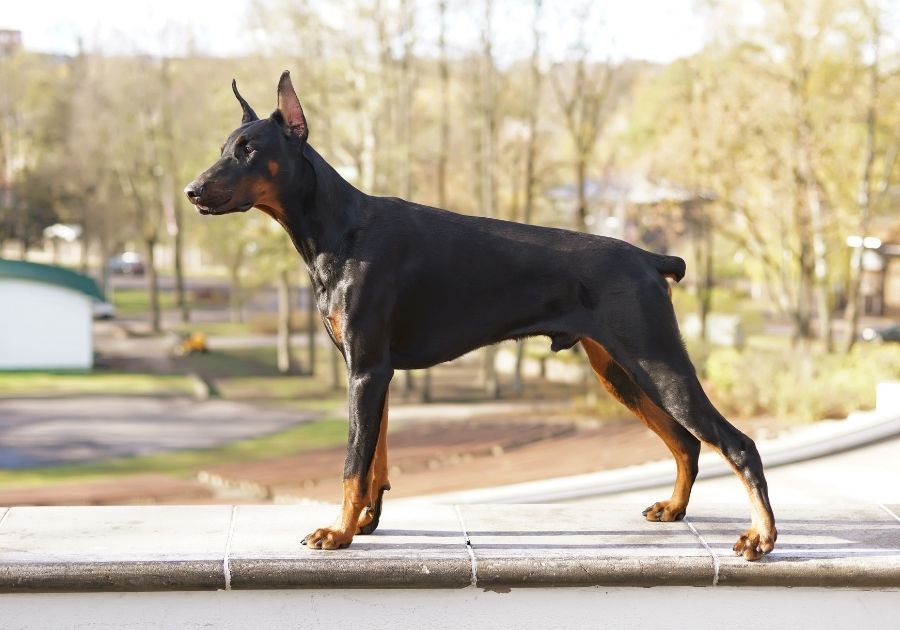
Doberman Pinscher Origin
The Doberman Pinscher came into existence in the 19th century thanks to a tax collector named Louis Dobermann.
To protect himself as he went about his risky duty, Dobermann decided he needed a bodyguard.
As a dogcatcher, he often had dogs around him, so it must have seemed like a better option to have a dog be his protector.
Dogs are loyal, after all. With his goal in mind, he went to work.
No one is quite sure which breeds he used to develop his guard, but historians suggest that the German Pinscher, the Rottweiler, the Greyhound, the Weimaraner, and the Great Dane were all part of it.
Dobermann was successful in his work, and though he didn’t leave his breeding secrets behind, the breed was named after him.
Other breeders continued the work the best they could, but because they focused more on the Doberman Pinscher’s role than its appearance, they succeeded in developing a very stubborn dog breed.
It was a breeder named Otto Goeller who later shaped the Doberman Pinscher into what we know today.
The breed got into the United States around 1908, and the American Kennel Club recognized it the same year.
Doberman Pinscher Appearance
The Doberman Pinscher is a large dog, a quality that helps it in its guard duties.
They weigh between 60 and 80 pounds and grow from around 24 inches to around 28 inches. Males are slightly bigger and taller than females.
This breed has a short, shiny coat that’s easy to groom, although it sheds more than people assume.
It usually comes in one of four colors: black, fawn, blue, and red. Another deceptive aspect of the Doberman Pinscher is its body.
It has a slender build but is packed with more muscles than meets the eye. It has dark eyes, droopy ears, and a long tail.
Many pet parents dock the tail and crop the ears, but that remains controversial.
Doberman Pinscher Personality
Loyalty is the main trait Louis Dobermann wanted in this breed, and it remains the Doberman Pinscher’s biggest trait.
You can count on it to get its job done, and it loves to please its owner.
The Doberman doesn’t get unusually aggressive, but it won’t back down when its family is in danger. It is a guard dog to the core.
This breed can make a good pet, but not an idle one. It loves having something to do and will enjoy training.
It is also highly intelligent, another reason you should keep it mentally stimulated.
The challenge here is trying not to get bored. The good thing about this breed is that it doesn’t get unusually stubborn, though it can be independent.
Many people fear guard dogs, and this breed is not an exception. The stereotype is that the Doberman Pinscher is ferocious and very aggressive, but that’s an exaggerated myth.
German Shepherd Dog Breed – All You Should Know
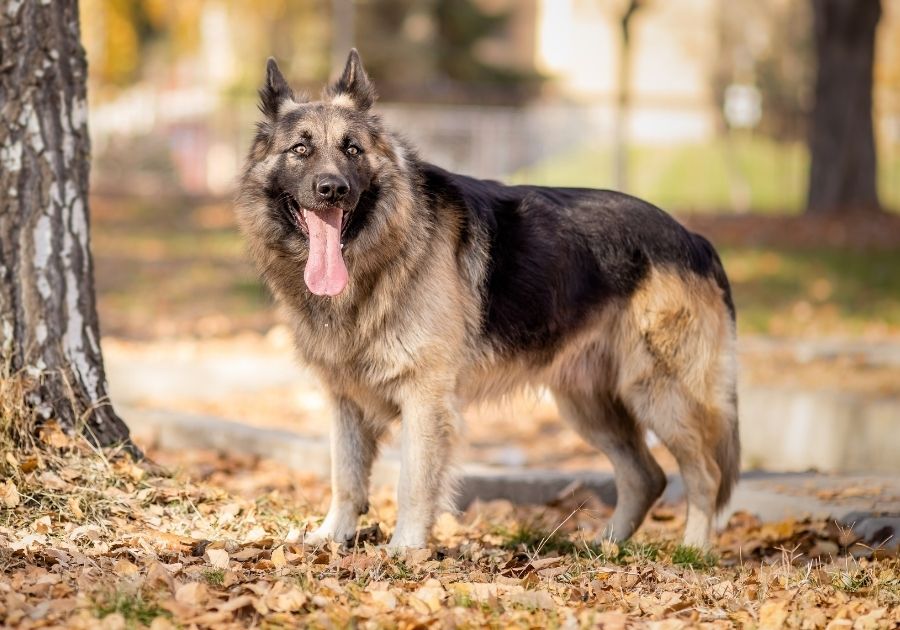
German Shepherd Origin
The German Shepherd originated from Germany, and like the Doberman, it is considered a relatively new breed.
It was developed in the 19th century by a German captain named Max von Stephanitz.
The German society wasn’t yet industrialized, and farming was a strong sector.
These farmers often employed dogs to herd their sheep, but there wasn’t a distinct herding breed in Germany.
Max von Stephanitz sought to change that, and after his retirement, he began his breeding experiment.
His experiment was successful, but it wasn’t long since herding dogs lost their jobs as Germany got industrialized.
Max von Stephanitz changed the course of his breed and got it enlisted in the army.
The German Shepherd fought alongside the German army in World War 1 as a messenger, rescuer, guard, supply carrier, and sentry.
The German Shepherd’s work impressed a lot of people, and though it had been in the United States before the war—it was recognized by the AKC in 1908—it got popular after that.
Anti-Germany sentiments propped up during the same period, and it affected the way people viewed the breed.
To alleviate this, the American Kennel Club changed the breed’s name to Shepherd Dog.
In England, the British Kennel Club did the same, renaming the dog Alsatian Wolf Dog.
It wasn’t till 1931 that the American Kennel Club reverted to the name. The British Kennel Club took a longer time, eventually going back to the old name in 1977.
German Shepherd Appearance
The German Shepherd is one easily recognized dog breed, with its standing ears, black nose, long snout, and dark eyes.
The popular German Shepherd colors are black and tan, though it can be seen in other colors like pure black, black and white, black and tan, red, and silver.
The male German Shepherd is often taller than the female German Shepherd by 2 inches, but their weight range falls between 75 and 95 pounds.
The breed has a double coat that’s slightly rough to the touch. This coat served as protection while it carried out its herding function.
Completing its appearance is a muscular body that features either medium or long hair.
Overall, this breed looks athletic and serious, yet accomodating and gentle.
Personality
The GSD acts like it knows many Americans see it as the ultimate police dog.
Its serious nature and devotion to a task ahead of him are similar to a cop on duty.
This behavior it takes to any household, and if you own one, be prepared to give it something to do.
This breed is aloof towards strangers but isn’t supposed to be aggressive without cause.
Protectiveness is a desirable trait, however, and in a home where it has no other job (or even if it does), the German Shepherd will assume the role of a watchdog and guard dog.
You’d need to socialize it from a young age so its reserved nature won’t develop into fear-based aggression.
With its family members, the German Shepherd is loyal, affectionate, and eager to please. While it may not always be enthusiastic towards you, it loves your company.
Leaving this breed outside and alone is a big mistake. Though a guard dog, it wants to be around people.
This breed is a very intelligent one, another reason it thrives in law enforcement. This makes it easy to train as it enjoys anything mentally stimulating.
However, it isn’t a walk in the park. New pet parents will be surprised to find that the GSD has a strong independent spirit and needs a firm owner.
You also need to exercise this breed regularly as it is highly energetic.
Doberman vs German Shepherd: What are the Differences?
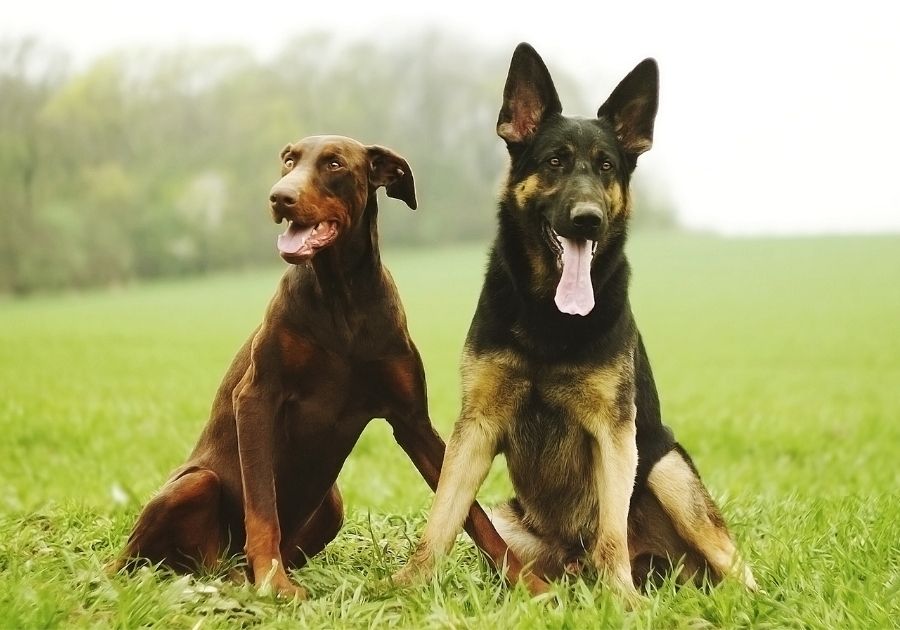
Both the Doberman Pinscher and German Shepherd have a strong guarding background with similar personalities. In modern times, they are still among the best guard dog breeds.
There are some differences between both breeds in size, temperament, coat type and color, and lifespan.
Some of them are subtle, but they are not hard to spot. We will compare both breeds using these 12 categories.
Size
Both breeds are large dogs, but the Doberman is the larger of the two. It weighs up to 100 pounds, which is 10 pounds more than the German Shepherd can boast of.
The Doberman Pinscher is also taller by 2 inches. Looking at them, the size difference isn’t always apparent.
However, if the Doberman size compared to German Shepherd size is a major factor for you, then you can take this piece of information into account.
Appearance
It is easy to tell both breeds apart as they do not look very alike. There aren’t any obvious similarities in their looks.
The Doberman Pinscher looks taller and slimmer than the German Shepherd which has a more terrifying edge with its stocky frame. Both are muscular and strong, though.
The Doberman Pinscher has a shorter coat as well, and it sticks close to the skin.
It feels smooth to the touch, different from the rougher texture of the German Shepherd.
The more common color of the Doberman Pinscher is black and rust, while that of the German Shepherd is black and tan.
Energy
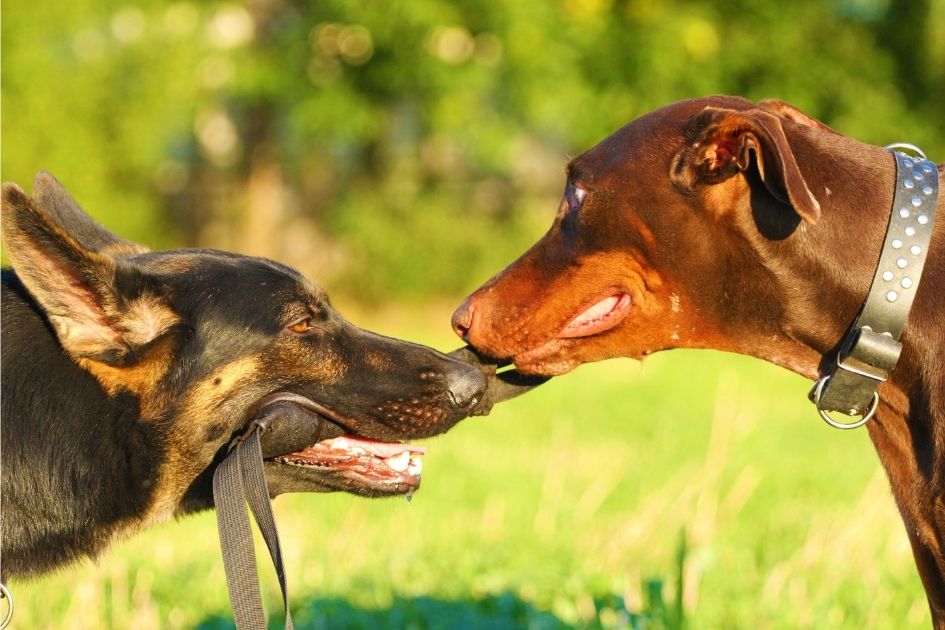
The energy level of both the German Shepherd and the Doberman Pinscher is high, and you should give them a lot of exercises.
Here, there isn’t any notable difference. They were both bred to work, and they both require a lot of physical and mental activities.
An hour is a minimum for both the German Shepherd and the Doberman Pinscher.
Sometimes, you might find yourself going up to 2 hours before these breeds get satisfied.
Long walks aren’t enough to meet their exercise needs. They need something more challenging.
Activities like jogging, agility, and fetch are some other ways to get both breeds’ blood running.
Temperament
Both the Doberman Pinscher and German Shepherd are highly intelligent, and though it is assumed that herding dogs are more intelligent than working dogs, that’s not always the case.
It isn’t the case for the Doberman Pinscher. It is just as intelligent as the German Shepherd and prone to getting bored.
Don’t be surprised when your Dobie tries to outsmart you. Both breeds are good guard dogs and take their jobs seriously, but the German Shepherd tends to be more mischievous.
The latter is also more aloof, but both breeds are protective and defend their families against intruders. They are both loyal and devoted to their families.
Before getting either the Doberman Pinscher or the German Shepherd, you should have an active household and enough activities for them.
Trainability
Both breeds are trainable, but while herding dogs are generally easier to train, in this case, the Doberman Pinscher is considered easier than the German Shepherd.
It can even be handled by a new pet parent, as long as the latter knows how to be firm with a dog. Some experts recommend that first-timers work with a professional trainer.
As guard dogs, people assume that they’d be aggressive and heavy biters.
However, that can only happen if these breeds aren’t well trained. Any poorly trained dog will develop behavioral issues, including aggression and biting.
Therefore, you must start training both breeds as puppies when they’re still blank slates.
Those who adopted an adult Dobie or GSD might need the services of a trainer.
These dogs are eager to please, despite their occasional stubbornness and independent spirit.
So, obedience training shouldn’t be too hard on them. They also need socialization which would stop them from getting overprotective or fearful of strangers.
A common bad behavior of these breeds is incessant barking at visitors or strangers. You’d need to train them to curb this habit.
Health and Lifespan
These breeds can enjoy good health when well-bred and taken care of, so the foundations have to be in place.
That being said, the German Shepherd is expected to live longer than the Doberman Pinscher.
The German Shepherd is expected to live up to 14 years, while the Doberman Pinscher peaks at 12.
Both breeds can fall ill, and one illness common to them is hip dysplasia. Because they are large dogs, they are prone to this.
Ensure your Doberman or German Shepherd pup is certified free from hip dysplasia.
Other illnesses the German Shepherd can suffer from include Elbow dysplasia, cardiomyopathy, bloat, and crazy allergies. Fortunately, all these can be treated.
The Doberman Pinscher is vulnerable to Progressive Retinal Atrophy, hypothyroidism, cardiomyopathy, bloat, narcolepsy, and even albinism.
Coat and Grooming
As we’ve established above, the German Shepherd has a longer, fuller coat than the Doberman Pinscher. However, both are shedders.
The only difference is that the German Shepherd’s shedding is more noticeable due to the longer hair.
The Doberman Pinscher is easier to groom, but both breeds can be groomed without the services of a professional groomer.
They need proper brushing, and even more so when shedding. The longhaired German Shepherd will require more time so the hair won’t tangle.
Regular bathing isn’t necessary for either breed as they are odor-free. Limit it to once every 8 weeks or whenever they get dirty.
Dental care, nail clipping, and ear cleaning are important too.
Origin and AKC Recognition
The GSD and Dobie share the same origin, as they both come from Germany.
They are also new breeds compared to many others. It was in the 19th century that both breeds were developed, albeit for different reasons.
These breeds got recognized in the same year (1908) but were placed in different categories.
The German Shepherd was in the Herding group, while the Doberman Pinscher was registered in the Working Group.
The German Shepherd is currently more popular than the Doberman Pinscher on the AKC’s ranking.
It ranks 4th on the list, while the Doberman Pinscher is the 16th most popular breed.
Feeding
As large dogs, the Doberman Pinscher and German Shepherd need a high-quality meal that’s tailored for dogs their size.
The Doberman Pinscher tends to need more cups than the German Shepherd because it is weightier.
While 3 cups are recommended for a German Shepherd adult, 4 cups are the minimum for the Doberman Pinscher.
Remember that these breeds are highly active, which is why the meal you opt for should be packed with enough protein.
Their bones also grow fast, and only kibble meant for large dogs can help the bones develop at a regulated pace. This helps reduce the chances of hip dysplasia.
To know what kibble is suitable for this breed, check the ingredients listing.
Many high-quality meals good for large dogs have meat as the first ingredient and a protein rate of 18%.
Both breeds are prone to obesity and bloat, the latter being a critical condition.
You can avoid both issues by controlling the meal, spreading it two times, and not feeding them immediately before or right after exercising.
Price
The standard price of both the German Shepherd puppy and the Doberman Pinscher puppy falls between $1,500 and $3,000.
The Doberman pup tends to be more expensive than the German Shepherd pup, but that’s not always the case.
A lot of factors determine price, and if you want to get one of these dogs from a winning bloodline, expect to pay more.
Puppy mills and backyard breeders are cheap, but they are not advisable because of the health issues you risk facing later on.
Find a reputable breeder to shop from, regardless of the high initial cost.
The reputable breeder should be willing to let you visit and check out the environment, as well as give you proof of good health and answer all questions you have.
He/she will ask you questions as well to determine whether or not the breed you want is suitable for you.
Adoption is another process to get either breed. The average cost of adopting either a Doberman or a German Shepherd is $300.
Security Purposes
As guard dogs, both breeds are excellent for security services. They defend with all they have and don’t slack on their duties.
Both breeds also make good watchdogs because of their alert nature. They are amongst the best guard dogs you can have.
Are They Good With Kids and Other Pets?
The German Shepherd tends to be better with kids than the Doberman Pinscher, but both are kid-friendly dogs.
Your kids should be taught to treat a dog right, and you should introduce your pet dog to your kids from a young age. These help foster a good relationship.
Both breeds are also good with other dogs and cats when they were raised alongside them.
Because they are territorial, they may not be accomodating of outside dogs.
Are They Good Family Dogs?
These breeds are good as family pets, and they both share some family-friendly attributes. They are eager to please, loyal, affectionate, and protective.
They can also adapt to an apartment, though you’d need to exercise regularly to avoid destructive habits.
You should train them not to bark excessively too. These dogs are not fit for everyone, though.
While they tick similar requirements and factors, you may find that the Doberman Pinscher appeals to you better, or vice versa.
Is the German Shepherd stronger than a Doberman Pinscher?
If a German Shepherd were to ever get into a fight with a Doberman Pinscher, it would be hard to determine which breed would win.
The Doberman Pinscher has an advantage of weight and size, but the German Shepherd is also stocky.
Why do police use German Shepherds instead of Dobermans?
Policemen often opt for German Shepherds as their preferred dog breed because it possesses the right trait. It is highly intelligent, trainable, obedient, and strong.
It is also independent enough to take on a task and see it through. Plus, the war background is a bonus.
Dobermans are not used in the police force because they lack an undercoat.
Are German Shepherds faster than a Doberman Pinscher?
The German Shepherd is stockier than the Doberman Pinscher, so may not be as fast as it. It depends on the individuals, however.
Are German Shepherds more aggressive?
Both breeds are sometimes feared to be aggressive, but aggression towards humans is not a desirable trait for them.
If you witness a Doberman Pinscher or aggressive German Shepherd, it was either poorly bred or badly trained.
Doberman vs German Shepherd: Which is the Best Dog For You?
The Doberman Pinscher and German Shepherds are both excellent guard dogs and good companions.
Regardless of which breed you choose, you will be rewarded with a loyal protector if you do your job right.
None is better than the other, and if you still face a dilemma of which to choose, you can opt for a German Shepherd Doberman mix. That way, you would hopefully get the best of both worlds.
You May Also Like:
Belgian Malinois vs German Shepherd: 11 Key Differences

